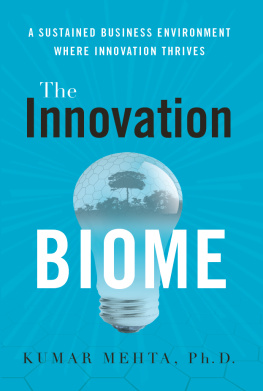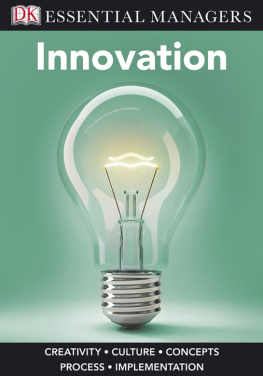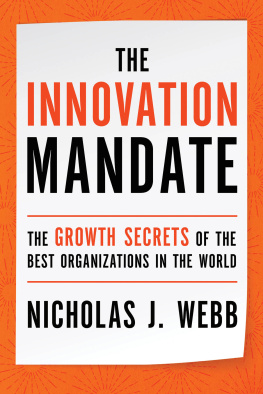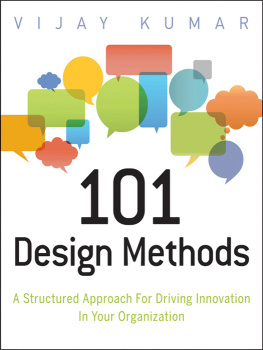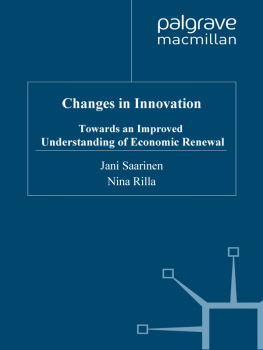About the Author

Dr. Kumar Mehta is an expert in innovation science and dedicated to providing knowledge to help accelerate the rate of innovation across the globe. Kumar has been studying innovation before it became a buzzword, basing his 1990 dissertation on how groundbreaking ideas and technologies spread. Since then he has used his knowledge to create the conditions for innovative thought throughout his tenure in a large corporation as well as in building out imaginative and forward-thinking companies.
Kumar has been the CEO of a successful enterprise that employs over 1,200 professionals worldwide. Kumar has also spent over thirteen years at Microsoft honing his skills in innovation, data analytics, research, and business strategy. He frequently speaks around the world on these topics.
Kumar is passionate about education and serves on the board for the Committee for Children, a global nonprofit dedicated to fostering the safety and well-being of children through social-emotional learning and development.
Kumar also serves as a Senior Research Fellow at the Center for the Digital Future at the University of Southern California.
Kumar holds a PhD in pharmaceutical socioeconomics from the University of Iowa and lives in Seattle with his wife (his two young-adult children are on their own innovative journeys).
In Closing
I hope you have enjoyed reading this book and find the lessons valuable. I do want to stress that building and bringing to market great, world-altering creations are within the abilities of almost everyone. This book is a labor of love and simply designed to bring together the key components of the innovation process with the current thinking and science behind each area. I believe you can create an innovation biome by applying the principles presented in this book, and I wish you all the best in your innovation journey.
I would love to hear from my readers. If you have any comments about the book, or if you would like to share your thoughts, learn more about the concepts presented here, or simply discuss how innovation can be advanced, please email me at .
CHAPTER 1
Types of Innovation
We all know something is innovative when we see it and touch it for the first time. The first time I held an iPhone in my hand, I thought it was the greatest piece of engineering ever created. Remember, it was released in 2007, when tech-savvy people were using the triple-tap technique on a cramped keypad, most likely a flip phone or a Blackberry, to uncover the limited amount of information you could access from your mobile device at the time.
The concept of a phone with a touch screen, a full web browser, and the ability to pinch and expand and tilt seemed like a mindblowing idea to me at the time. Now, for most of us, the novelty of the iPhone has worn off, and it is a utility device that we use every dayeven though the value it provides increases each day and with each new app. However, everyone would agree that this is an innovation that remarkably changed how we live, access information, and communicate.
So, while we dont need to define an innovationsince we know one when we see oneI would like to start by framing the concept of innovation with my favorite definition (out of the countless definitions out there). The US Patent and Trademark Office describes innovation as a process or a series of steps that begins with human imagination and creativity and results in the creation of something of value for society to enjoy. Innovation is not defined by just a single event or even a single brilliant idea. The creation of intellectual property takes vision and perseverance and often involves people from different backgrounds and expertise collaborating in order to transform an idea into something that is real and tangible.
One of the reasons innovating is difficult is that it has been classified in countless ways, and people think about it in different ways. Sometimes innovations are described as any of these terms:
And there are many other forms of innovation. In fact, probably more than a hundred types of innovations have been published.
It is important to have a clear and lucid view regarding the types of innovation, because different types of innovation require different activities and tools. Using a set of tools for one type of innovation that is designed for another set of activities is a waste of time, money, and effort, and promises to be a frustrating process.
Three types of innovation create most of the societal value, and they are the focus of this book:
The first of these, incremental innovation, includes improvements to offerings that are already available in your organization. This type often generates the next version of or improvements to your product. It may include logical extensions to products and services, improvements in design or manufacture, usability improvements, or ways to reach more customers. The next version of a smartphone, next years model of an automobile, the next generation of a razor (e.g., adding another blade), a localized version of software, and a better formulation of a drug are all incremental innovations.
Breakthrough innovation includes brand-new creations without a precedent. This is a new discovery or invention with the potential to significantly enhance lives, often through the advancement of science and technology. This type includes most of the innovative discoveries developed through original R&D, such as penicillin, the Internet, the automobile, and the airplane.
Transformational or experiential innovations create new experiences. They may not be brand-new inventions; instead they repurpose existing inventions and functionality to create new experiences. Examples include commercial aviation (not the invention of the airplane itself, but the use of airplanes to transport millions of people every day), online shopping (again, not the Internet but its use as the worlds largest shopping mall), the iPhone, and Uber. Each of these offerings transformed the lives of millions by synthesizing existing (already invented) capabilities and technology to achieve the transformation.
These types of innovation are fairly easy to identify, but the crucial pointand what many companies fail to realizeis that each of these categories requires a certain set of activities. The wrong activities will not only hinder your innovation efforts but may actually damage them. The correct pairing, though, is what will allow your companys innovation biome to flourish. Well discuss these pairings at length later in the book, but for now, lets get back to basics.
.
CHAPTER 2
First-Principles Innovation
People love their burgers. Americans consume close to ten billion burgers every year, making it the most popular food in the country. People love the texture, the taste, the aromas, the emotional appeal, and the feeling that comes from every juicy bite they chew. However, burgers are not good for the planet.
Plant-based burgers have been widely available for a long time and in many varieties, but they have always remained a niche and been consumed almost exclusively by vegetarians. Meat lovers, the vast majority of burger consumers, have found these plant-based versions lacking in many of the attributes they desire and crave and have consequently never warmed up to them. Environmentally, the problem with burgers and meat-based food is that the required livestock and production process consume a lot of resources. There
Next page
